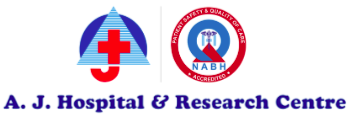
Types of malaria and their symptoms
Malaria, a potentially fatal illness spread by the bite of an infected Anopheles mosquito, has long been a significant public health concern, particularly in tropical and subtropical areas. The World Health Organization estimates that malaria poses a risk to about half of the world's population. The Plasmodium parasite is the source of this illness, and depending on the type of parasite involved, the severity can change. This blog article will examine the various forms of malaria, emphasizing each one's unique symptoms, available treatments, and preventative steps.
What is Malaria?
When an infected mosquito bites a person, Plasmodium parasites are injected into the circulation, causing malaria, an infectious disease. The liver is where these parasites go to grow and proliferate. Though some mosquito species can remain dormant for some time before becoming active, symptoms usually manifest a few weeks following the bite.
Types of Malaria
There are five Plasmodium species known to cause malaria in humans:
-
Plasmodium falciparum:
This is the most common and fatal variety, especially in Africa. The bulk of malaria-related deaths globally are caused by it.
-
Plasmodium vivax:
Typically causing a less severe form of malaria, P. vivax is more frequent in Asia and Latin America than in Africa, but it can remain latent and produce relapses.
-
Plasmodium ovale
This species, which is mostly found in West Africa, can also lie dormant in the liver for years after the original infection, leading to relapses.
-
Plasmodium malariae
Compared to P. falciparum, this kind is less frequent and typically causes milder symptoms; but, if left untreated, it can result in long-term infections and consequences.
-
Plasmodium knowlesi
This kind, which is a zoonotic illness that primarily affects animals but can also infect humans, is widespread in Southeast Asia.
> Symptoms of Malaria
Generally speaking, malaria symptoms are flu-like and can differ according to the species of Plasmodium that is causing the infection. Typical signs and symptoms include:
-
Fever
-
Chills
-
Headache
-
Sweats
-
Fatigue
-
Nausea and vomiting
-
Body aches
-
General malaise
In severe cases, particularly with P. falciparum, patients might experience:
-
Severe anemia
-
Difficulty breathing
-
Organ failure (kidneys, liver)
-
Cerebral malaria, which causes swelling of the blood vessels of the brain, potentially leading to permanent brain damage
Malaria symptoms frequently resemble those of numerous other ailments, which can occasionally make diagnosis more difficult in regions where uncommon forms of the disease are more prevalent.
> Diagnosis and Treatment
Malaria diagnosis requires a microscopic examination of a blood sample to detect the parasite. Rapid diagnostic tests (RDTs) are also frequently employed since they provide a speedy if occasionally less accurate, approach.
The kind of malaria, the location of infection, the intensity of symptoms, and the patient's health state all influence the course of treatment. The most often used antimalarial medications are:
-
Combination treatments based on artemisinin (ACTs): Most successful in treating P. falciparum.
-
When resistance is not an issue, chloroquine phosphate is used to treat P. vivax, P. ovale, and P. malaria.
-
Primaquine: Used to eradicate dormant liver forms of P. vivax and P. ovale parasites, hence preventing relapses in infections.
It’s crucial to complete the full course of treatment to avoid relapses and prevent resistance.
> Prevention and Control
Controlling mosquito populations and avoiding mosquito bites are the main goals of prevention measures. Among the measures are:
-
Using mosquito nets sprayed with insecticides (ITNs)
-
Indoor residual pesticide spraying
-
Donning pants and shirts with long sleeves
-
Applying bug repellant to skin that is exposed
Preventive treatments for expectant mothers and small children may also be advised in regions with high malaria transmission rates.
It is essential to comprehend the many forms of malaria and its distinct symptoms to effectively treat and prevent the disease. The goal of the continuous research and development effort to combat malaria is to eventually eradicate the disease by reducing its transmission. To battle this deadly disease, however, international cooperation as well as personal awareness and safety measures are still essential.
In light of the potential severity of malaria and the variation in symptoms among strains, you must seek medical attention as soon as you suspect illness. Timely and competent medical assistance can be crucial for effective treatment and recovery from malaria, as the disease can quickly worsen and become potentially fatal. For a precise diagnosis and a suitable treatment plan, always seek the advice of a healthcare professional, particularly in areas where malaria is common.
